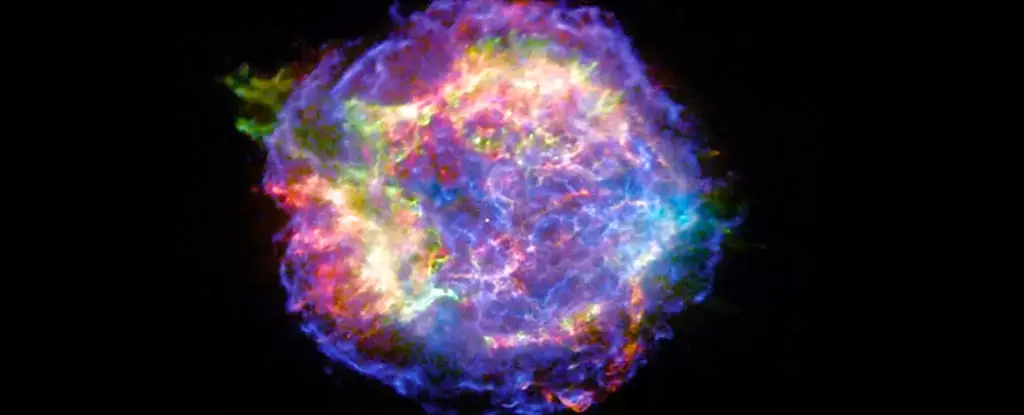Richard Feynman famously emphasized the profound truth that all matter in the universe is made of atoms. This simple yet powerful statement carries enormous weight because atoms compose everything we see, touch, and interact with. But understanding the origin of atoms is far from trivial—it draws upon the depths of cosmology, nuclear physics, and astrophysics. Fundamentally, an atom consists of a dense nucleus made up of protons and neutrons, surrounded by electrons orbiting this core. The balance between positively charged protons and negatively charged electrons defines the electrical neutrality of atoms, a cornerstone of chemical stability. More intriguingly, the variety of atoms, or elements, arises from the number of protons within the nucleus—this single parameter carves out the entire periodic table.
From the Hot Cauldron of the Big Bang to the Birth of the Simplest Atoms
The universe’s atomic saga began in the aftermath of the Big Bang, roughly 14 billion years ago—a cataclysmic event that set space expanding and matter evolving. Initially, the cosmos was unimaginably hot and dense. Under these extreme conditions, the fundamental particles—protons, neutrons, and electrons—existed but could not assemble into stable atoms because the searing energy prevented electrons from settling into orbits around nuclei. It wasn’t until the universe expanded and its temperature dropped to around 5,000 degrees Fahrenheit that electrons could finally ‘settle down,’ pairing with protons and neutrons to form neutral atoms in a phase dubbed “recombination.” Despite its name, this term misleads; ‘combination’ would be more fitting, since this was the first major assembly of electrons and nuclei into atoms.
Predominantly, these early atoms were hydrogen, with its solitary proton and electron, and helium, containing two protons and two neutrons alongside two electrons. These two simplest elements constitute approximately 98% of all ordinary matter in the universe. Even heavier isotopes like deuterium (a heavier form of hydrogen) and helium nuclei formed in the first few minutes after the Big Bang, when temperatures soared above a billion degrees. However, the universe’s primordial nucleosynthesis was a brief affair, setting the stage but producing mostly lightweight elements.
The Crucible of Stars: Forging Complexity Through Fusion
The universe’s tale of atom creation doesn’t end with hydrogen and helium cloaking its vast expanse. The greater complexity—and by extension, life itself—depends on heavier elements forged in the fiery forges of stars. These cosmic furnaces reach temperatures and pressures which enable nuclear fusion, a process overcoming the intense electrostatic repulsion between protons to bind them together via the powerful yet short-range strong nuclear force.
Stars larger than our Sun serve as factories where elements from carbon to iron materialize. The energy beefing these nuclear reactions rivals that of the early universe, proving that stars act as time capsules replicating the universe’s primordial conditions in confined and sustained pockets. However, fusion in stars runs into a roadblock at iron; creating elements heavier than iron consumes more energy than it releases, making natural fusion unfavorable under normal stellar conditions.
Supernovae and Stellar Collisions: Factories of Heavy Atoms
To transcend the iron barrier, nature resorts to dramatic, violent events. When massive stars exhaust their nuclear fuel, their cores collapse and trigger spectacular explosions known as supernovae. These catastrophic blasts generate extreme energy and neutron flux, enabling the synthesis of the heaviest elements—those beyond iron and nickel. Consequently, precious metals like gold and radioactive elements owe their existence to the throes of dying stars.
Even more exotic celestial phenomena enrich the cosmos with heavy elements. Collisions between neutron stars—ultra-dense remnants of massive stars—release colossal energy and flood space with heavy atoms as they spiral toward becoming black holes. These cataclysmic mergers are not just spectacular astrophysical fireworks but crucial for populating the universe with elements essential for planets and life.
Beyond Ordinary Matter: The Mysterious Realm of Dark Matter
While atoms provide a comprehensive explanation for the tangible universe, they account for only about 5% of the cosmos’s total mass-energy content. The enigmatic majority is dark matter, an elusive substance that neither emits nor absorbs light and appears to be made of fundamentally different particles than ordinary atoms. Its exact nature remains one of science’s biggest mysteries. Despite decades of research, dark matter defies direct detection and fundamentally challenges our understanding of matter’s formation and structure on cosmic scales.
A Symphony of Physics: Piecing Together Our Atomic Heritage
Tracing the origin of atoms requires synthesizing knowledge from multiple physics domains—from the principles of quantum mechanics defining atomic structure, to nuclear physics explaining fusion, and cosmological models describing the universe’s evolution. This interdisciplinary dance reveals a universe that not only grows and expands but steadily manufactures complexity—from simple hydrogen atoms formed spontaneously, to the dazzling diversity of elements birthed in stellar furnaces, supernovae, and cosmic collisions.
What stands out to me is how elegant and intertwined this cosmic narrative is: the atoms constituting our bodies are cosmic relics, forged in ancient stars and violent stellar events, connecting our existence to the grand cosmic timeline. This perspective is not merely academic; it is humbling and invigorates a profound appreciation for the interconnectedness of science, history, and our place in the universe. In this journey, physics is not just a discipline but a poetic story of creation, destruction, and transformation writ large across the canvas of space and time.

